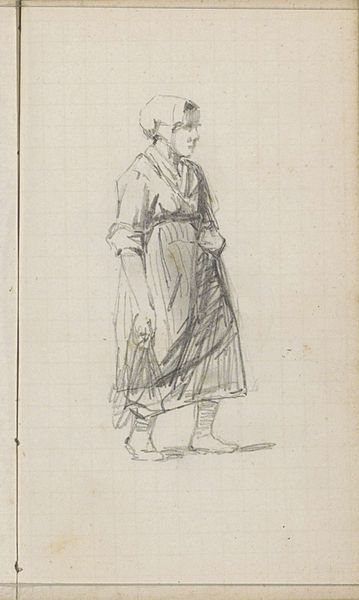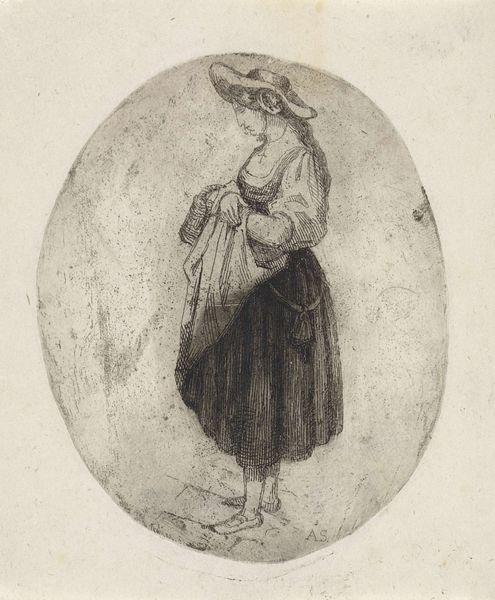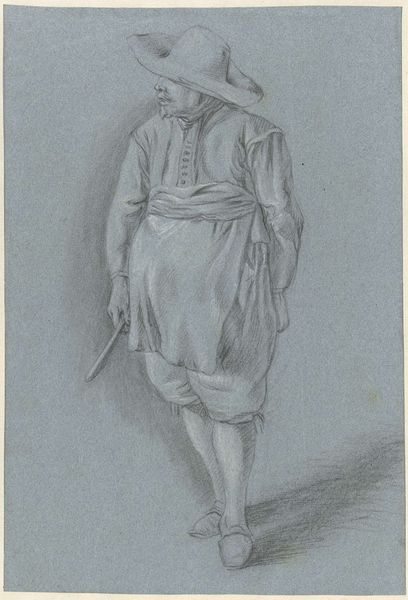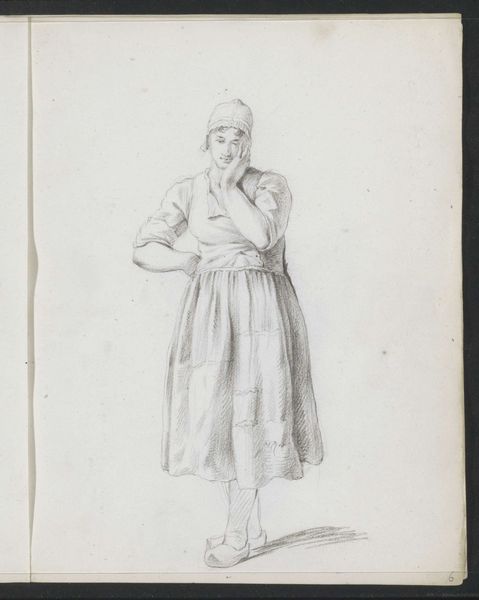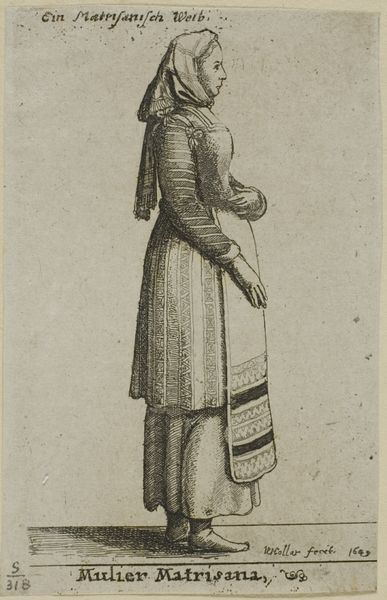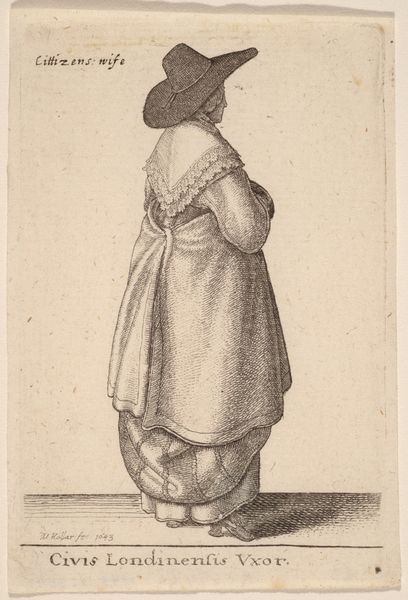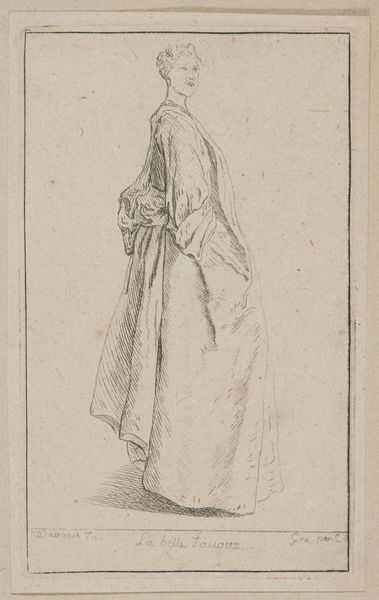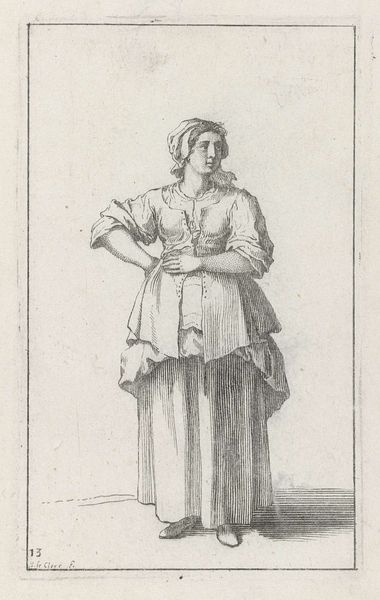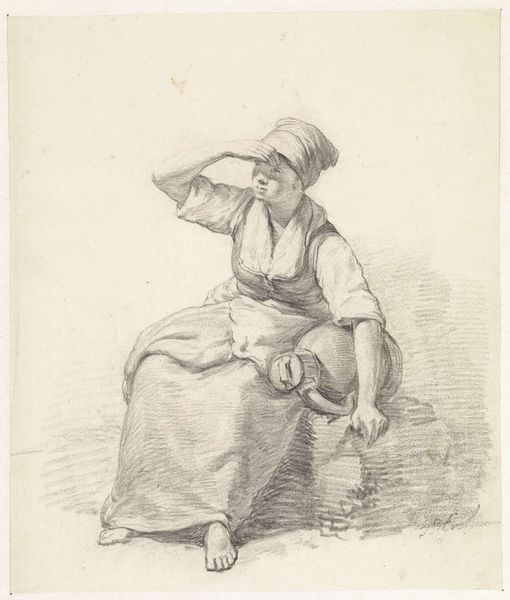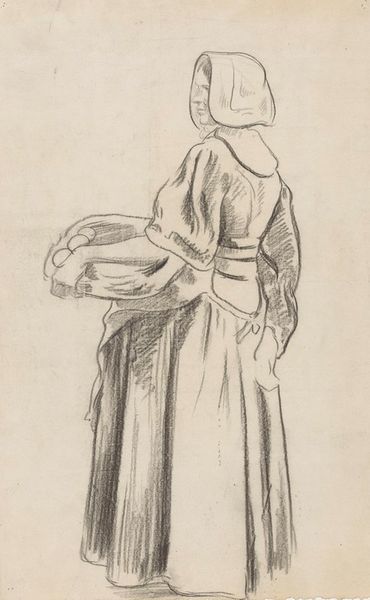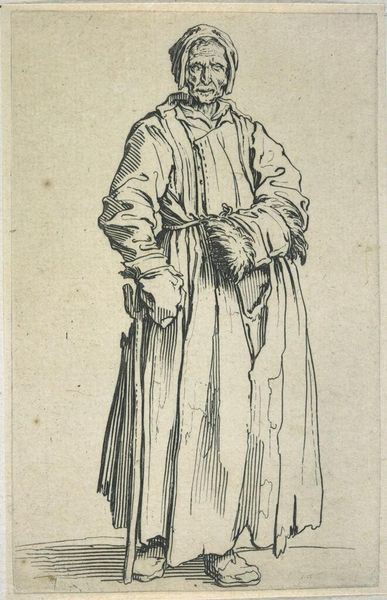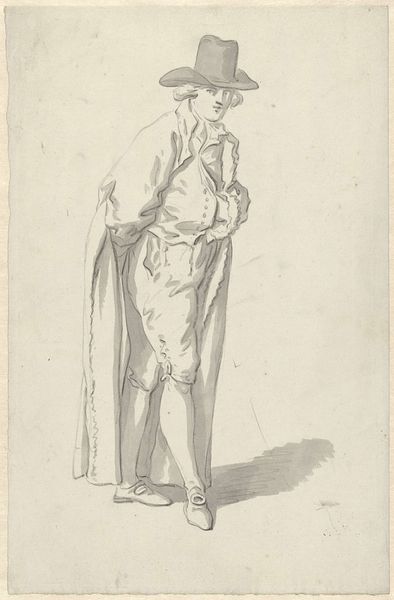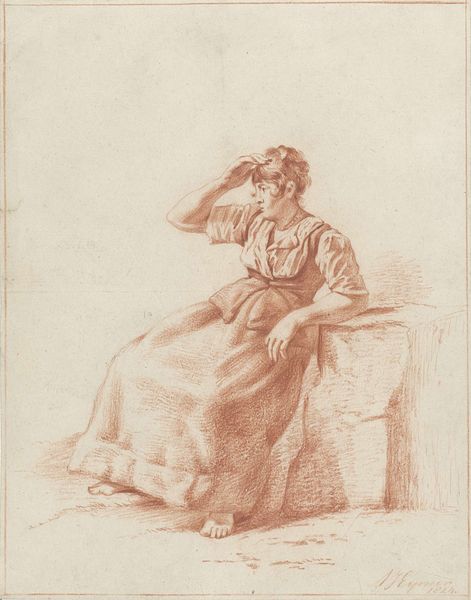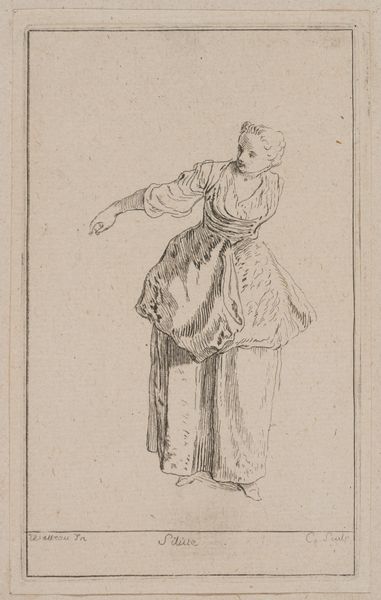
Staande vrouw, naar links, een hand in de zij, de ander op de kin Possibly 1821
0:00
0:00
drawing, pencil
#
portrait
#
pencil drawn
#
drawing
#
narrative-art
#
dutch-golden-age
#
pencil sketch
#
charcoal drawing
#
figuration
#
pencil drawing
#
romanticism
#
pencil
#
portrait drawing
#
academic-art
#
realism
Dimensions: height 333 mm, width 241 mm
Copyright: Rijks Museum: Open Domain
Curator: This drawing, attributed to Abraham Johannes Ruytenschildt and possibly dating from 1821, is titled "Standing Woman, facing left, one hand on her hip, the other on her chin." It’s a pencil sketch. Editor: There's something immediately captivating about her pose—she appears pensive, caught in thought, with that casual hand on her hip suggesting a sense of self-assuredness despite the introspective moment. Curator: Absolutely. Looking at the materiality of the work, it’s interesting how Ruytenschildt uses the humble pencil to create such depth. You see a real consideration of the play of light and shadow, built through precise hatching and subtle variations in pressure. How was this drawing potentially circulating; for whom was this created, is the central question? Editor: Considering its historical context, drawings like these played a crucial role. Think of it—before photography, such sketches served a vital public function as visual records. Was this intended as a study for a larger composition? It could illuminate the artistic process within his studio. The museum plays such a key role in preserving pieces like this. Curator: Indeed. And I am always so interested in the subject; what’s the social context? A domestic worker? Her clothes look functional, typical of that period, which leads me to consider her socio-economic standing. This is art shaped by socio-political and labor implications, absolutely. Editor: It brings to mind questions about the representation of women and labor in the arts of the era. How were women viewed, and what narratives were deemed worthy of portrayal? It all impacts how people might have experienced viewing it at the time. Curator: Precisely! And understanding that public reception really highlights the power dynamics inherent in both art creation and consumption during the Romantic period. How and where the sketch would be produced becomes relevant to its place in art. Editor: Examining these kinds of drawings really demonstrates how even seemingly simple works can hold significant insights into cultural values and artistic practices of the past, doesn't it? Curator: Without a doubt, by looking at these subtle shifts in the labor involved, we see the very essence of an artist capturing both a fleeting moment and a much larger social narrative with just a pencil. Editor: It certainly gives a unique perspective and emphasizes the vital connection between art and societal evolution through our collections and institutions.
Comments
No comments
Be the first to comment and join the conversation on the ultimate creative platform.
